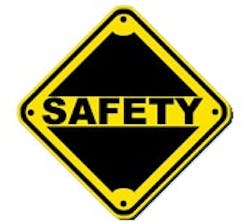Safety Shell Game
Machine operator safety is a subject that I easily can work up a lather over.
Spend enough time on a factory floor, and you'll experience your share of safety thrills and chills.
I still can see the electrician who, 30-plus years ago, flew 20 ft across a shop floor after being on the losing side of an argument with a 480 V panel.
I recall one manufacturing facility in which we went more than four years without an OSHA-recordable incident of any kind—a span that shattered corporation-wide records.
This comes to mind because of a position paper from the National Academy of Construction (NAC) entitled, "Combating the Negative Effect of Safety Incentives/Bonuses." Written in the wake of the BP oil fiasco, it seeks to counter a recent Christian Science Monitor report on a dangerous potential for oil-rig operators to hide injuries and their causes from public view and recordkeeping to earn accident-free performance incentives.
The NAC paper references studies that show injured employees recover more rapidly if they perform some type of productive work. This, to them, justifies the practice of light-duty activities. Among other things, it means the incident is not recorded as lost time.
I agree with the NAC's statement that "most companies who use these techniques do not do so with the intention to force the hiding of injury." I also agree with its proactive approach that can give companies the means and culture to improve safety performance.
I can't agree that injury-reporting abuse doesn't affect a lot of sites. I haven't worked a construction site since college, but I know factory floors, and they share many safety issues.
There's too frequently a disconnect between the "safety first" directive that company management always espouses and often genuinely believes, and the looming pressure it exerts to demand lost-time numbers below industry norms.
I was unpopular with my bosses at one management post because I discontinued light-duty, alternative job classes. Those were make-work, fraudulent jobs that every employee knew existed only to pad the safety stats. Stats that weren't very good to begin with.
Less than two years later, the stats began their trek to become the accident-free numbers I noted above, in part because the accident-avoidance expectations became unambiguously clear.
It took a lot of employee commitment, there were near-misses that we reported and investigated in bright lights and great detail, and we rewarded for the now-more-difficult-to-achieve results. But there was no question about what the rewards really meant.
There certainly can be therapeutic value in getting a seriously injured employee back into or keeping them in a work routine. But that's different from the cynical number-manipulating rationale that still exists in too many facilities.


